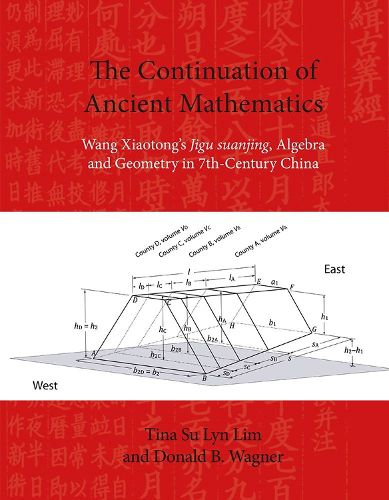Readings Newsletter
Become a Readings Member to make your shopping experience even easier.
Sign in or sign up for free!
You’re not far away from qualifying for FREE standard shipping within Australia
You’ve qualified for FREE standard shipping within Australia
The cart is loading…






After the collapse of Roman civilization, knowledge of mathematics dwindled in Europe. In the Arab world, however, the works of ancient mathematicians like Euclid were preserved and built upon by new thinkers like al-Khwarizmi, who became instrumental in spreading Indian mathematics and numerals to the West. Little known to Western historians, a parallel development of mathematical knowledge was happening in China. A rare glimpse of this world is offered via a translation and elaboration of one of the canons of classical Chinese mathematical education. Wang Xiaotong’s Continuation of ancient mathematics shows us a stage in the development from the 1st to the 14th century CE of the Chinese traditional algebra of polynomials. Here in the 7th century, columns of numbers used in root-extraction procedures are recognized as equations that can be solved numerically, but these equations cannot yet be manipulated. Wang Xiaotong arrives at numerically solvable polynomials through a variety of ad hoc techniques, including geometric constructions and rhetorical algebra. In the 18th century, it would be shown that all of his problems could be solved by straightforward algebraic manipulation of polynomials using 14th-century Chinese methods. Lim and Wagner’s in-depth study of the Continuation brings this work to an audience unfamiliar with the history and particulars of Chinese mathematical knowledge. Their worked examples also illuminate the text and invite comparison with the work of medieval mathematicians in the Middle East and Europe. The work will appeal to historians of mathematics especially but anyone interested in the evolution of Chinese science and technology will also find this very informative.
$9.00 standard shipping within Australia
FREE standard shipping within Australia for orders over $100.00
Express & International shipping calculated at checkout
After the collapse of Roman civilization, knowledge of mathematics dwindled in Europe. In the Arab world, however, the works of ancient mathematicians like Euclid were preserved and built upon by new thinkers like al-Khwarizmi, who became instrumental in spreading Indian mathematics and numerals to the West. Little known to Western historians, a parallel development of mathematical knowledge was happening in China. A rare glimpse of this world is offered via a translation and elaboration of one of the canons of classical Chinese mathematical education. Wang Xiaotong’s Continuation of ancient mathematics shows us a stage in the development from the 1st to the 14th century CE of the Chinese traditional algebra of polynomials. Here in the 7th century, columns of numbers used in root-extraction procedures are recognized as equations that can be solved numerically, but these equations cannot yet be manipulated. Wang Xiaotong arrives at numerically solvable polynomials through a variety of ad hoc techniques, including geometric constructions and rhetorical algebra. In the 18th century, it would be shown that all of his problems could be solved by straightforward algebraic manipulation of polynomials using 14th-century Chinese methods. Lim and Wagner’s in-depth study of the Continuation brings this work to an audience unfamiliar with the history and particulars of Chinese mathematical knowledge. Their worked examples also illuminate the text and invite comparison with the work of medieval mathematicians in the Middle East and Europe. The work will appeal to historians of mathematics especially but anyone interested in the evolution of Chinese science and technology will also find this very informative.